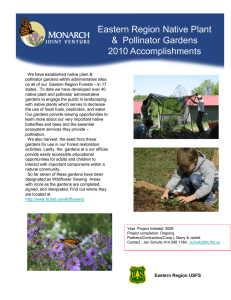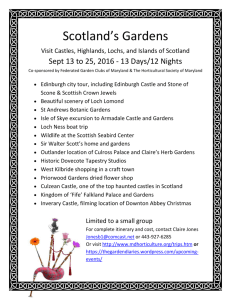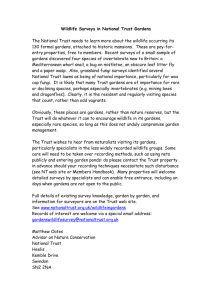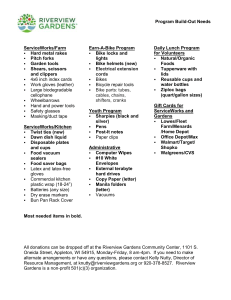IN SITU PLANT GENETIC RESOURCES IN FARMING SYSTEMS IN GHANA
advertisement
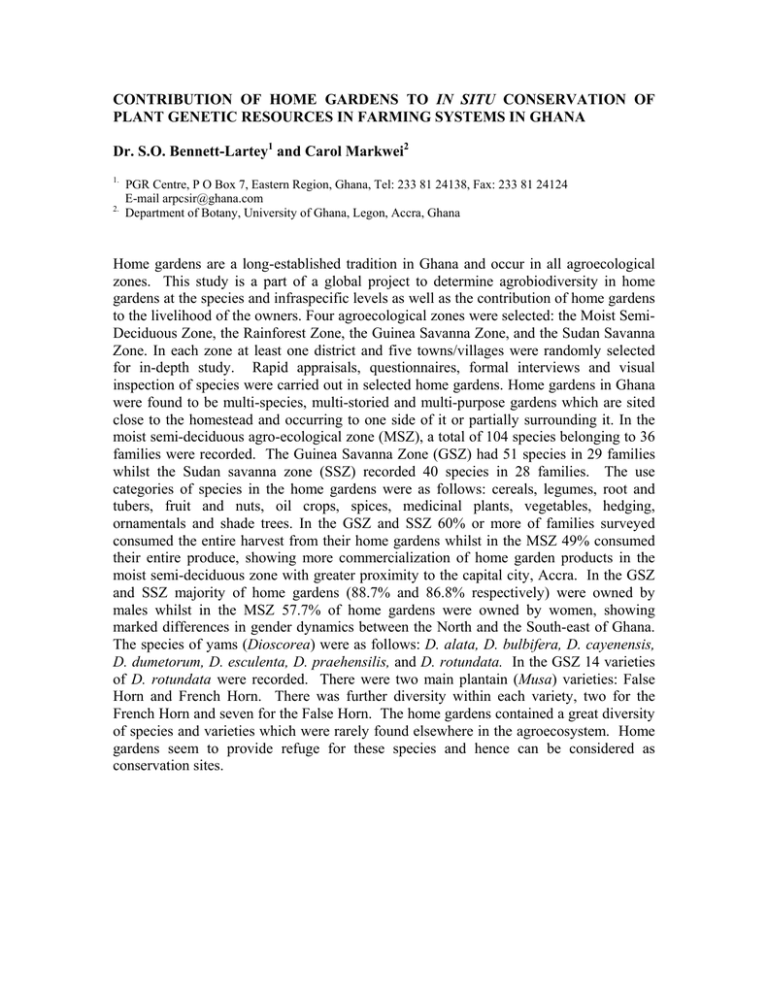
CONTRIBUTION OF HOME GARDENS TO IN SITU CONSERVATION OF PLANT GENETIC RESOURCES IN FARMING SYSTEMS IN GHANA Dr. S.O. Bennett-Lartey1 and Carol Markwei2 1. 2. PGR Centre, P O Box 7, Eastern Region, Ghana, Tel: 233 81 24138, Fax: 233 81 24124 E-mail arpcsir@ghana.com Department of Botany, University of Ghana, Legon, Accra, Ghana Home gardens are a long-established tradition in Ghana and occur in all agroecological zones. This study is a part of a global project to determine agrobiodiversity in home gardens at the species and infraspecific levels as well as the contribution of home gardens to the livelihood of the owners. Four agroecological zones were selected: the Moist SemiDeciduous Zone, the Rainforest Zone, the Guinea Savanna Zone, and the Sudan Savanna Zone. In each zone at least one district and five towns/villages were randomly selected for in-depth study. Rapid appraisals, questionnaires, formal interviews and visual inspection of species were carried out in selected home gardens. Home gardens in Ghana were found to be multi-species, multi-storied and multi-purpose gardens which are sited close to the homestead and occurring to one side of it or partially surrounding it. In the moist semi-deciduous agro-ecological zone (MSZ), a total of 104 species belonging to 36 families were recorded. The Guinea Savanna Zone (GSZ) had 51 species in 29 families whilst the Sudan savanna zone (SSZ) recorded 40 species in 28 families. The use categories of species in the home gardens were as follows: cereals, legumes, root and tubers, fruit and nuts, oil crops, spices, medicinal plants, vegetables, hedging, ornamentals and shade trees. In the GSZ and SSZ 60% or more of families surveyed consumed the entire harvest from their home gardens whilst in the MSZ 49% consumed their entire produce, showing more commercialization of home garden products in the moist semi-deciduous zone with greater proximity to the capital city, Accra. In the GSZ and SSZ majority of home gardens (88.7% and 86.8% respectively) were owned by males whilst in the MSZ 57.7% of home gardens were owned by women, showing marked differences in gender dynamics between the North and the South-east of Ghana. The species of yams (Dioscorea) were as follows: D. alata, D. bulbifera, D. cayenensis, D. dumetorum, D. esculenta, D. praehensilis, and D. rotundata. In the GSZ 14 varieties of D. rotundata were recorded. There were two main plantain (Musa) varieties: False Horn and French Horn. There was further diversity within each variety, two for the French Horn and seven for the False Horn. The home gardens contained a great diversity of species and varieties which were rarely found elsewhere in the agroecosystem. Home gardens seem to provide refuge for these species and hence can be considered as conservation sites.
